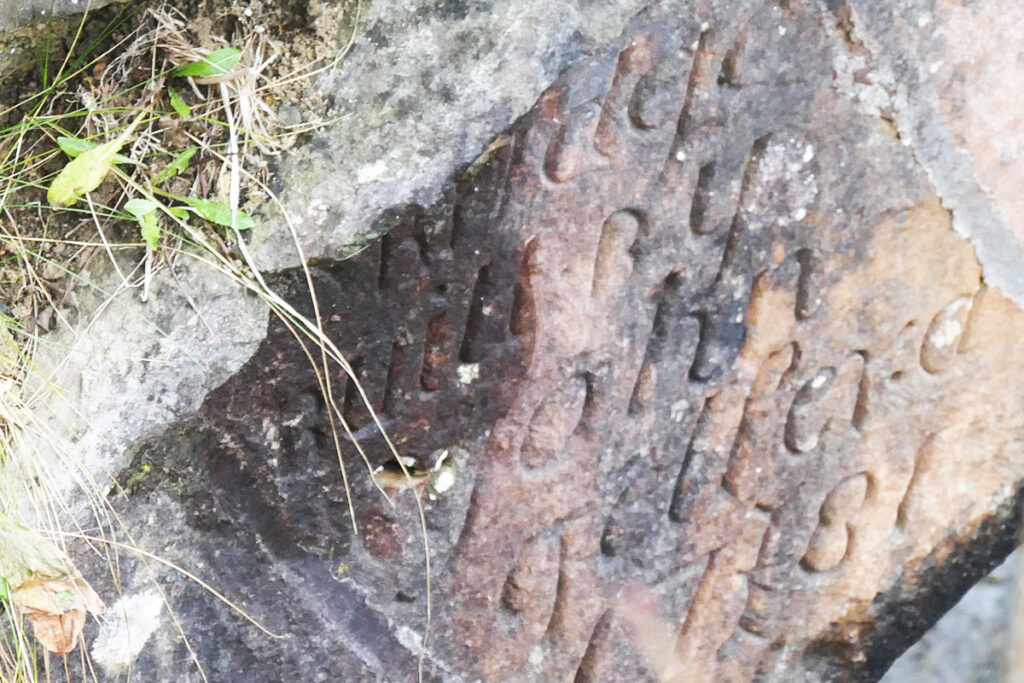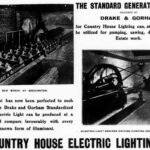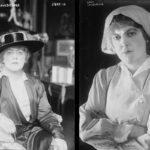Master mason John Telfer will have been proud of his work as he carved his name into the stonework of Glengonnar bridge, This pride in his solid workmanship was well-placed as 244 years later, and after a century of neglect, his bridge is still standing, albeit decayed and overgrown. The inscription carved in a beautiful curved script, angled to follow the line of the bridge arch, reads: “Bridge built by John Telfer, douglas 1781”. A mason’s mark is carved between the 17 and the 81. At some time a little movement of the arch stones has been repaired, slightly changing the alignment of the inscription. We know little about John Telfer; however Douglas parish registers of 1740 record the baptism of a baby John; son of John and Margaret Telfer,
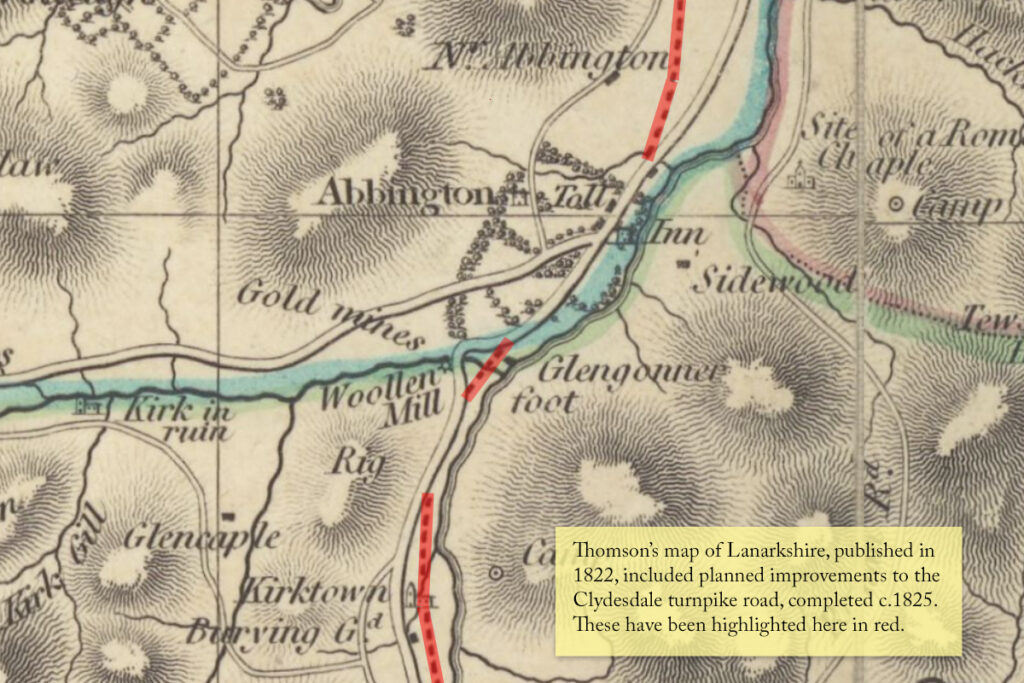
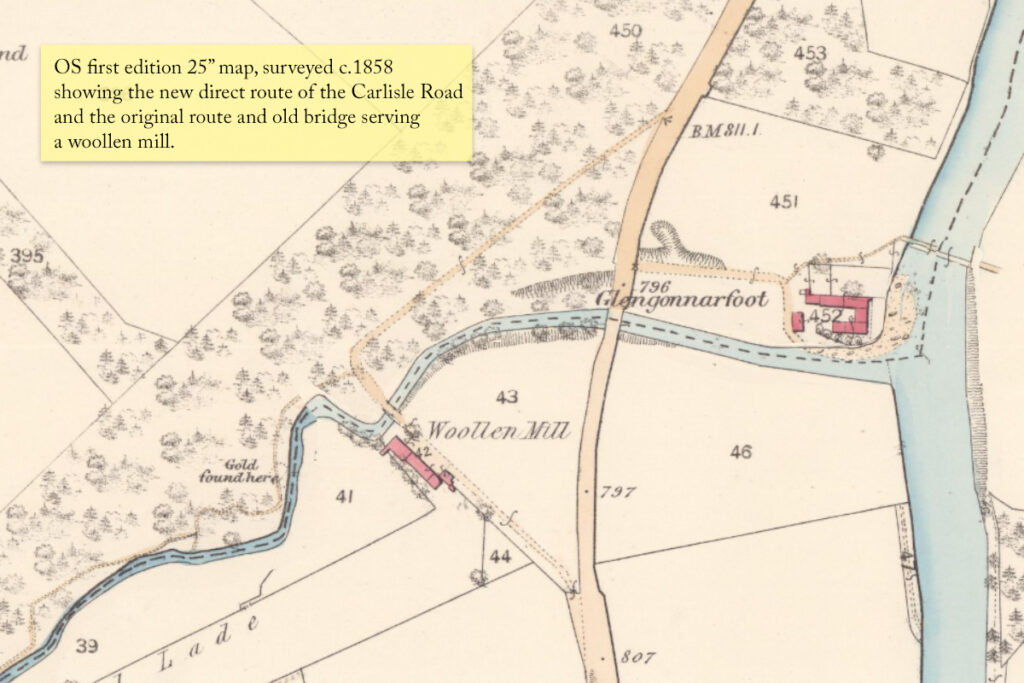
It is now difficult to believe that the little bridge once formed part of the main road between Glasgow and Carlisle, The Old Statistical Account, published in 1792, helpfully tells us that “the road from Douglas Mill to Moffat which goes through this parish (Crawford) had been completed within these 10 years.” “The Glasgow and Carlisle carriers go this road every week and for 3 years past one mail-coach comes down and another goes up each day.” This date in the OSA ties in neatly with the date inscribed on the bridge. Presumably prior to the building the turnpike road, travellers will have had to ford the Glengonnar burn.
While the turnpike was a great boon to trade, it followed a fairly circuitous route in order to minimise engineering works and costs. During the early 1820’s major improvements were made to upgrade the great road through Clydesdale, following a more direct route in some places and building several fine new bridges. A new bridge on a more direct alignment was completed at Glengonnar during the spring of 1825, leaving the dog-leg route of the old road to serve a small woollen mill beside the burn.
The old mill buildings were demolished some time around 1900 to make way for construction of Glengonnar House; Sir Edward and Lady Colebrooke’s extravagant new “cottage- style” country house. The bridge then became part of a driveway from Glengonnar House that crossed over the Carlisle road by a new bridge and continued through the private grounds of the estate, past the former site of Abington House.
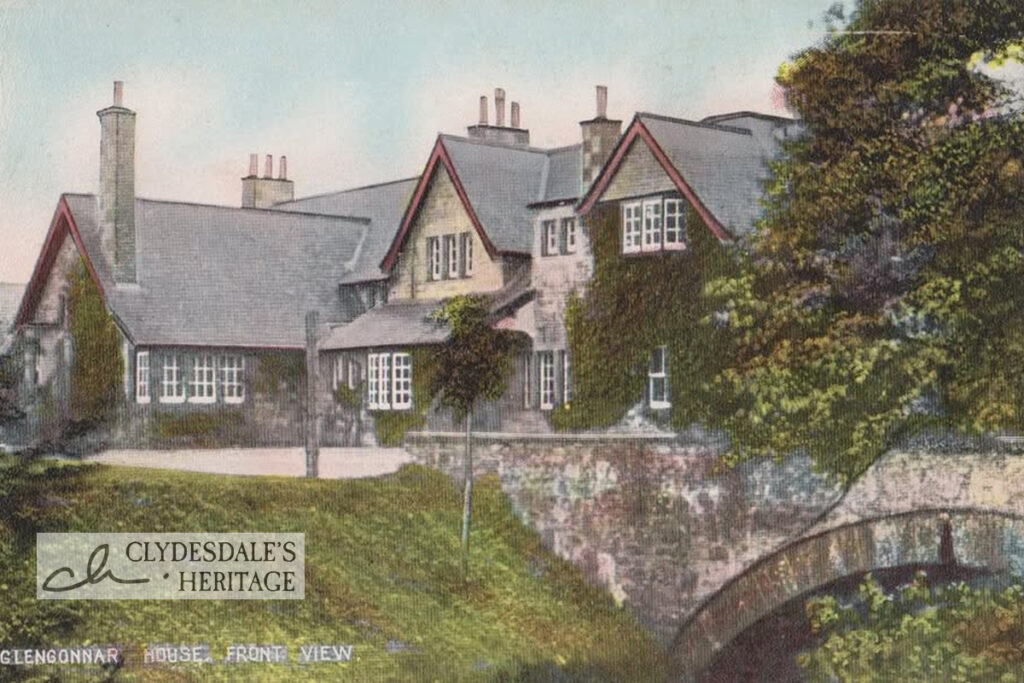
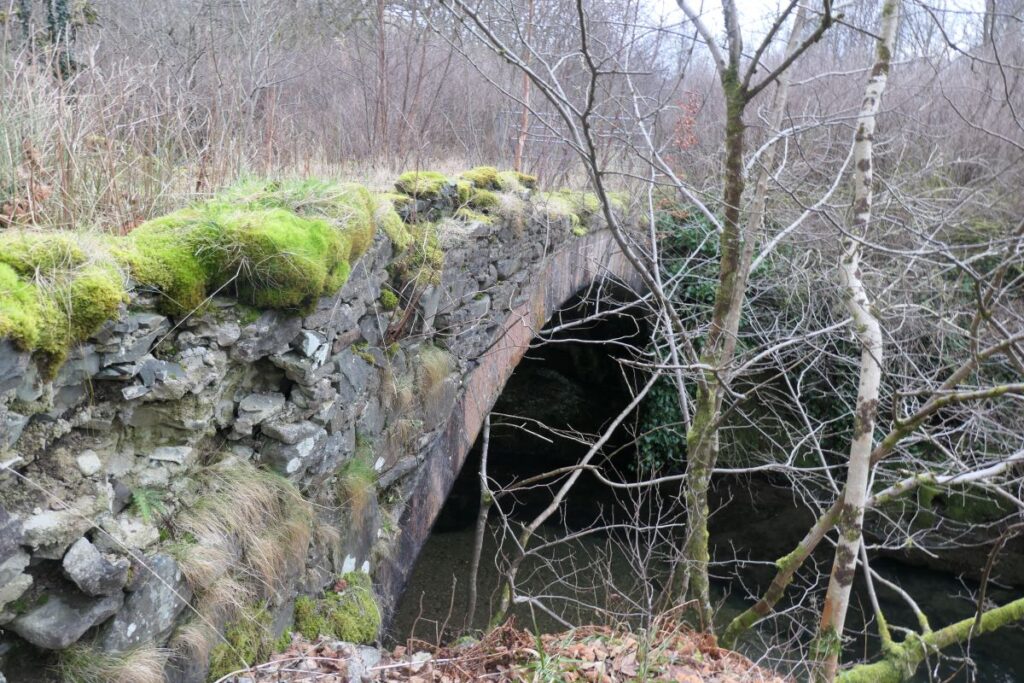
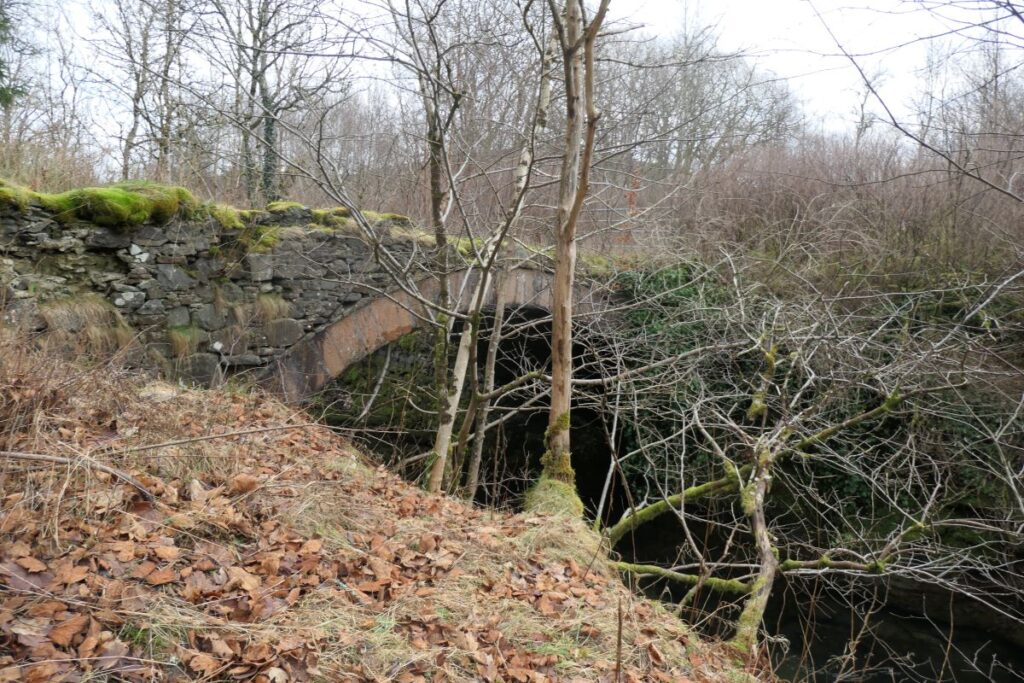
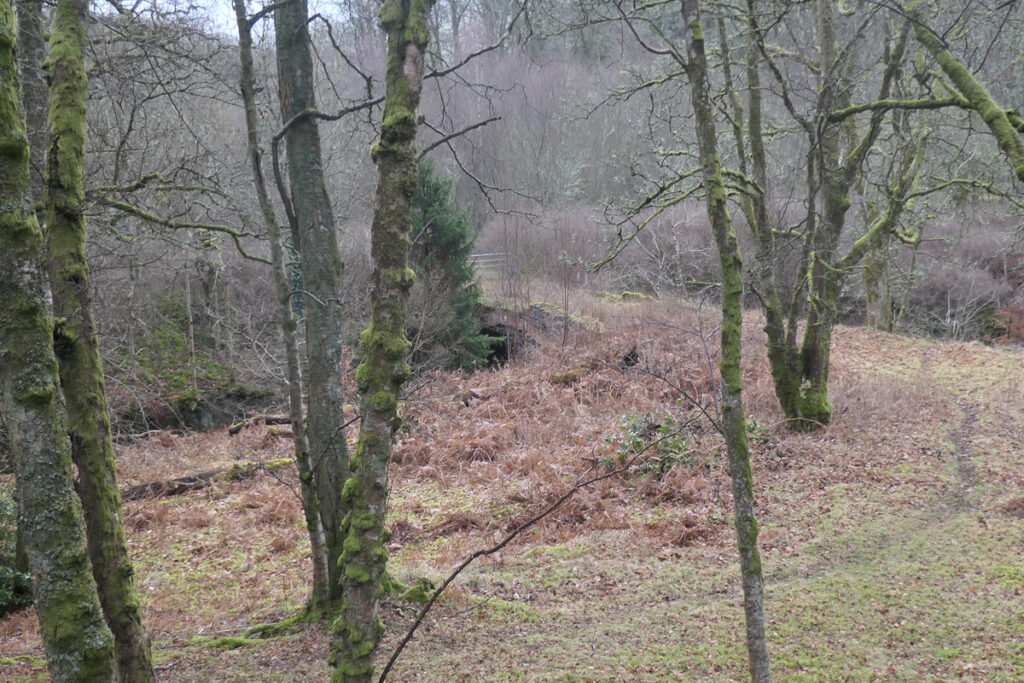
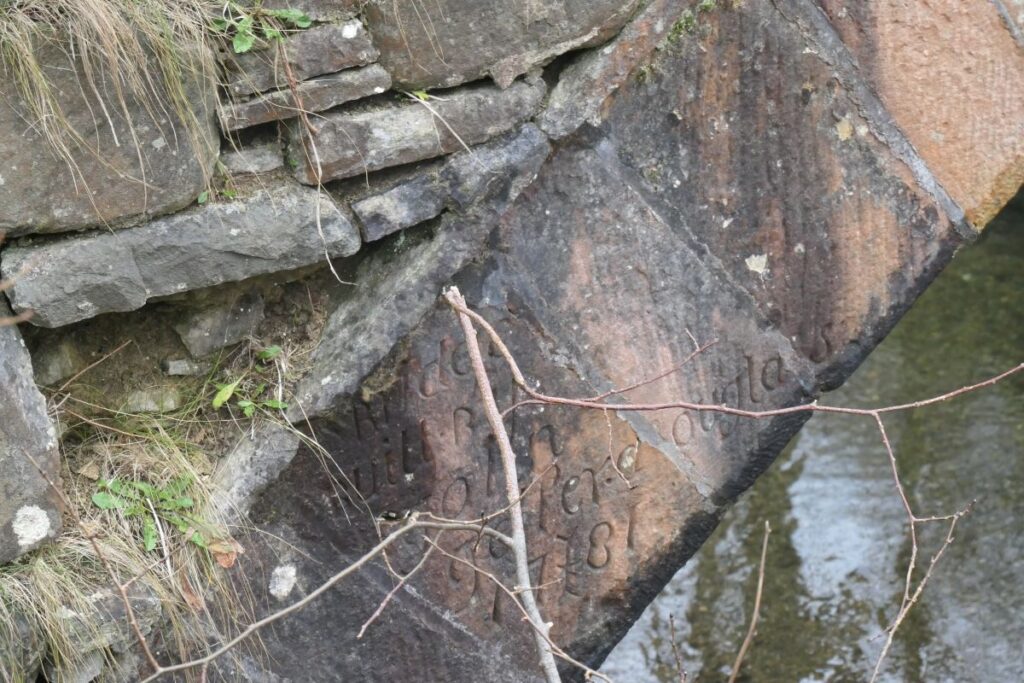

Postcard of the bridge and Glengonnar House, c.1905, views of the bridge, and the mason’s mark included in the inscription
The stylish Glengonnar House had only a short life and by the 1930’s lay unused. The old bridge would then have served little useful purpose. The landscape was radically changed in the 1970’s when the construction of the M74 created a noisy and significant barrier between Abington and the Glengonnar Glen.
John Telfer’s bridge is now mostly hidden among the trees and undergrowth of the delightful glen, and is rarely visited. The parapets are missing and shrubs grow from the spandrel walls, but the impressive arch still appears solid and sound. Considering that Glengonnar bridge formed part of one of the earliest schemes to improve travel between Glasgow and England, it is surprising that it is not included in CANMORE, the National record of the historic environment.
Robin Chesters, 21st January 2025
Unless otherwise stated, all text, images, and other media content are protected under copyright. If you wish to share any content featured on Clydesdale's Heritage, please get in touch to request permission.
